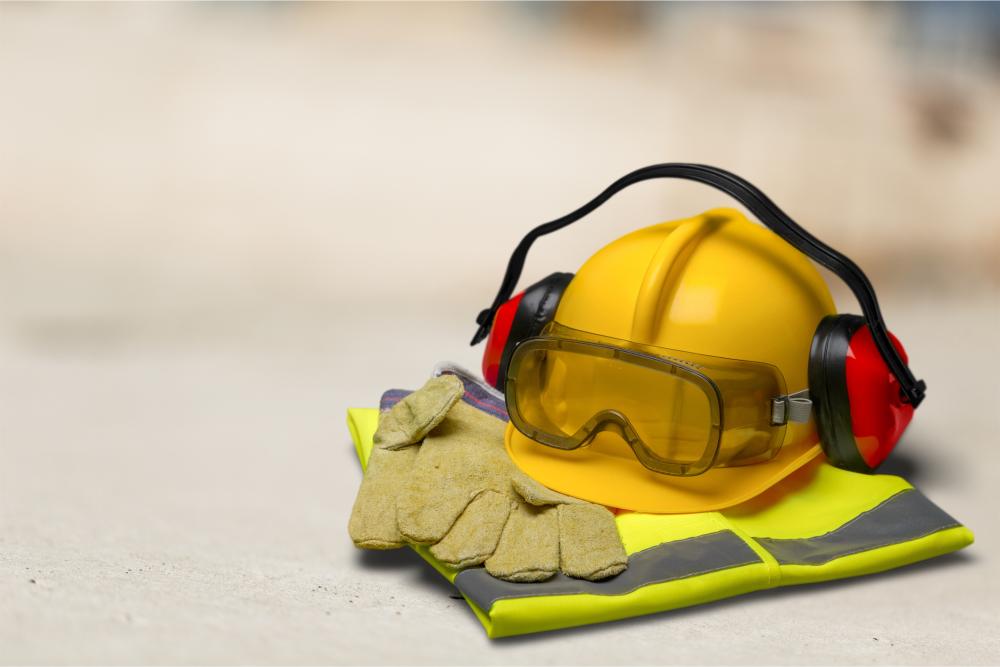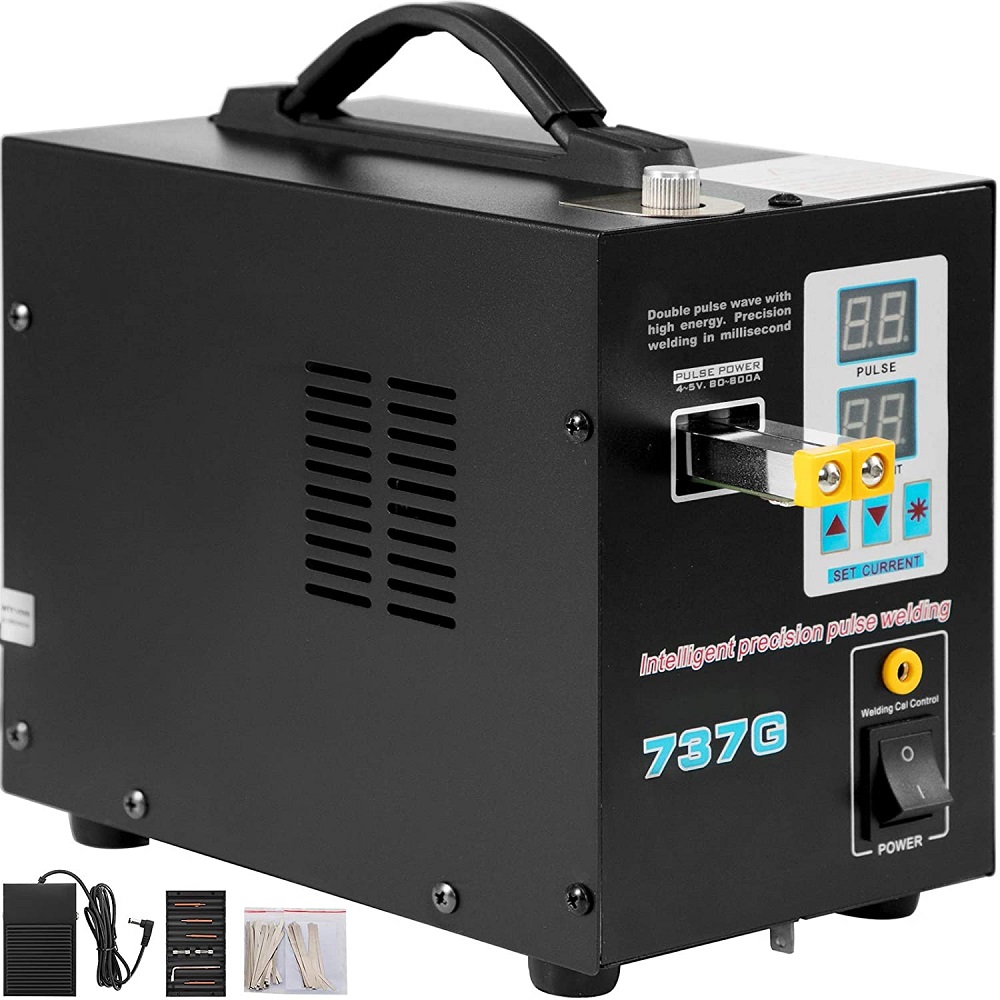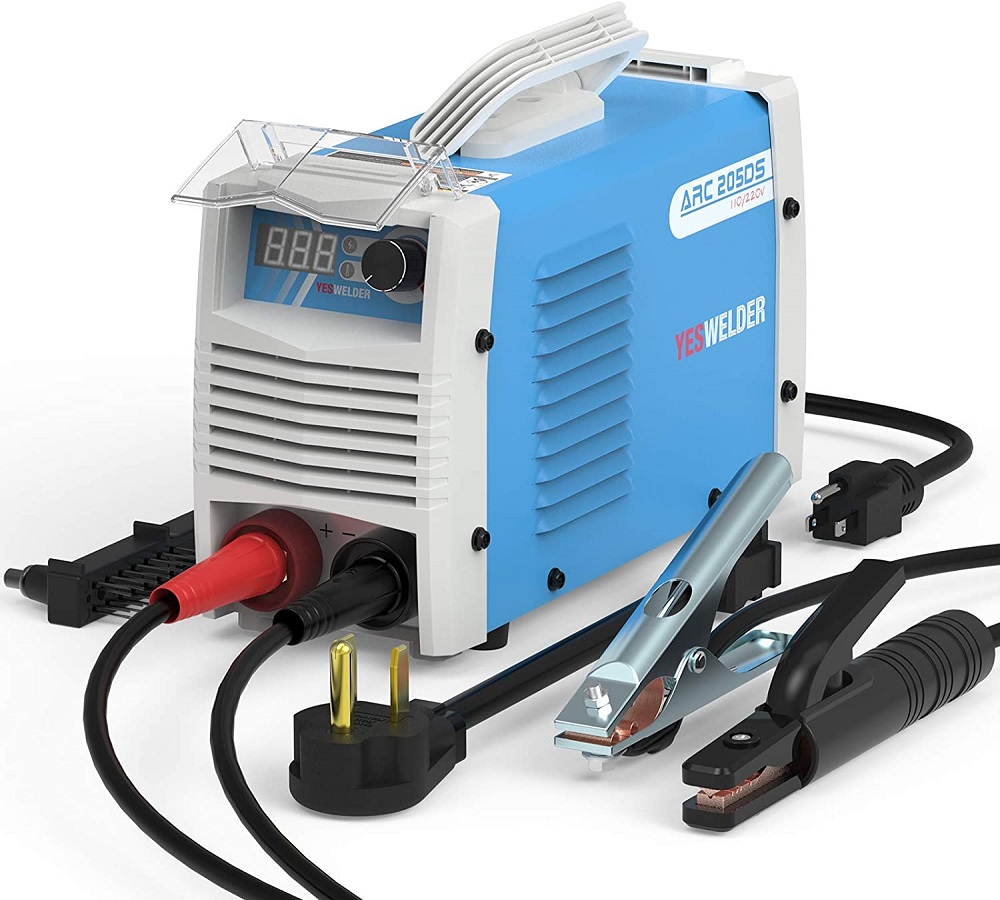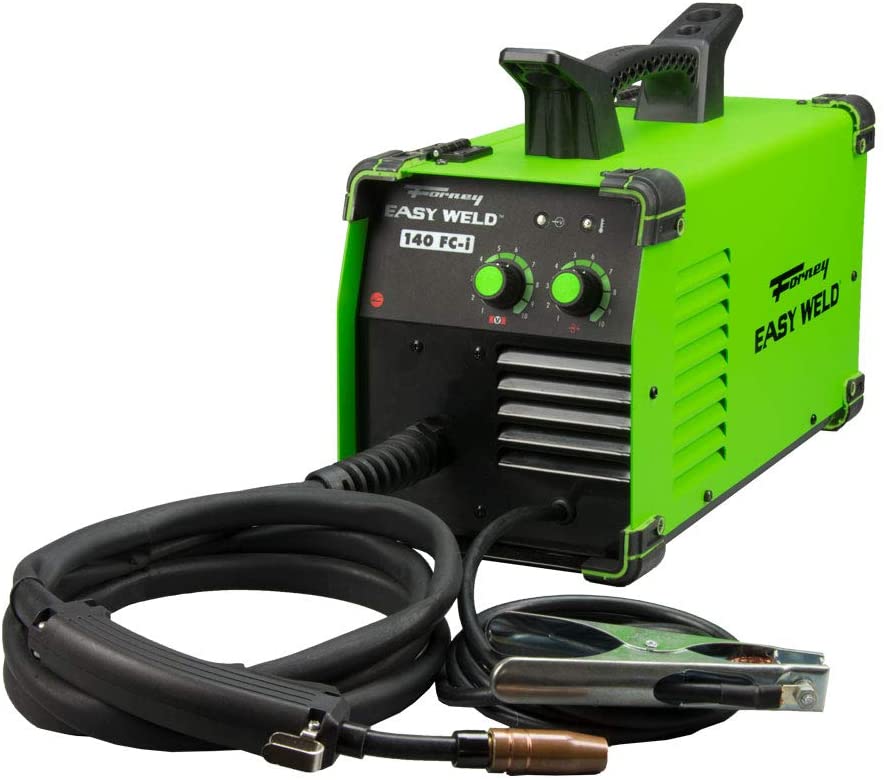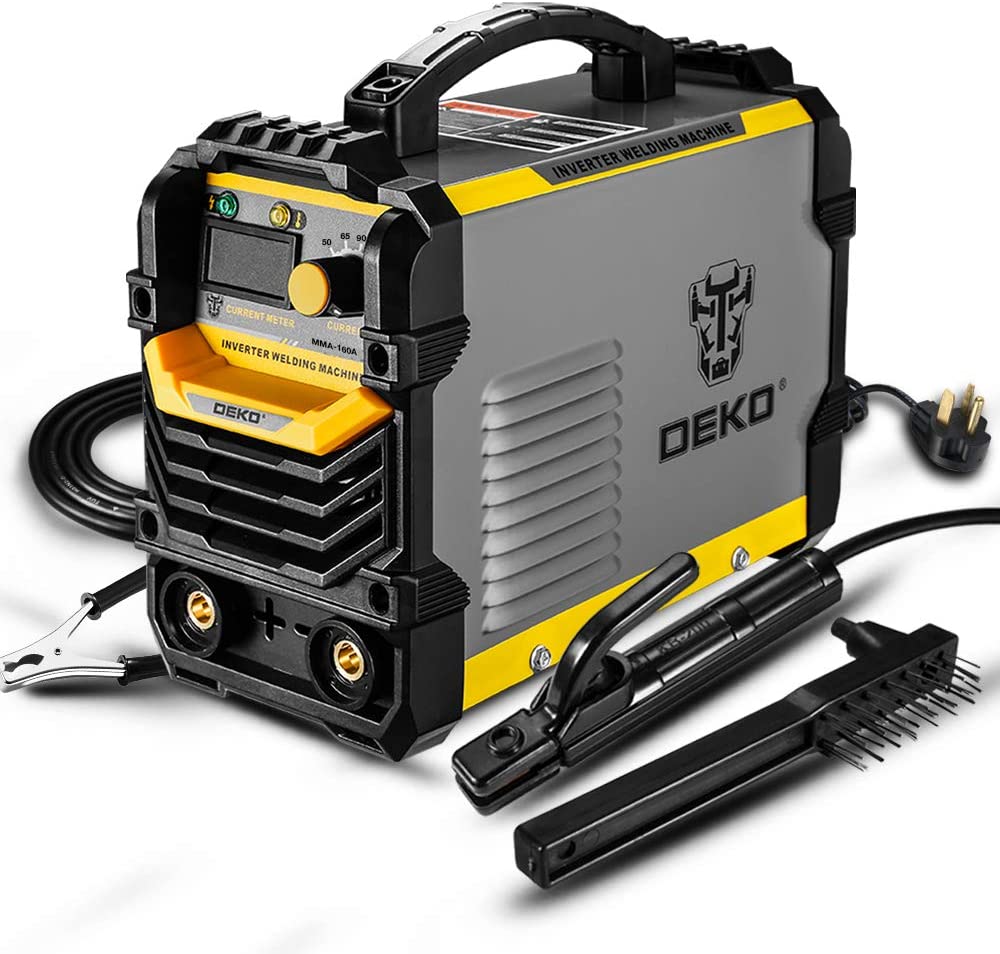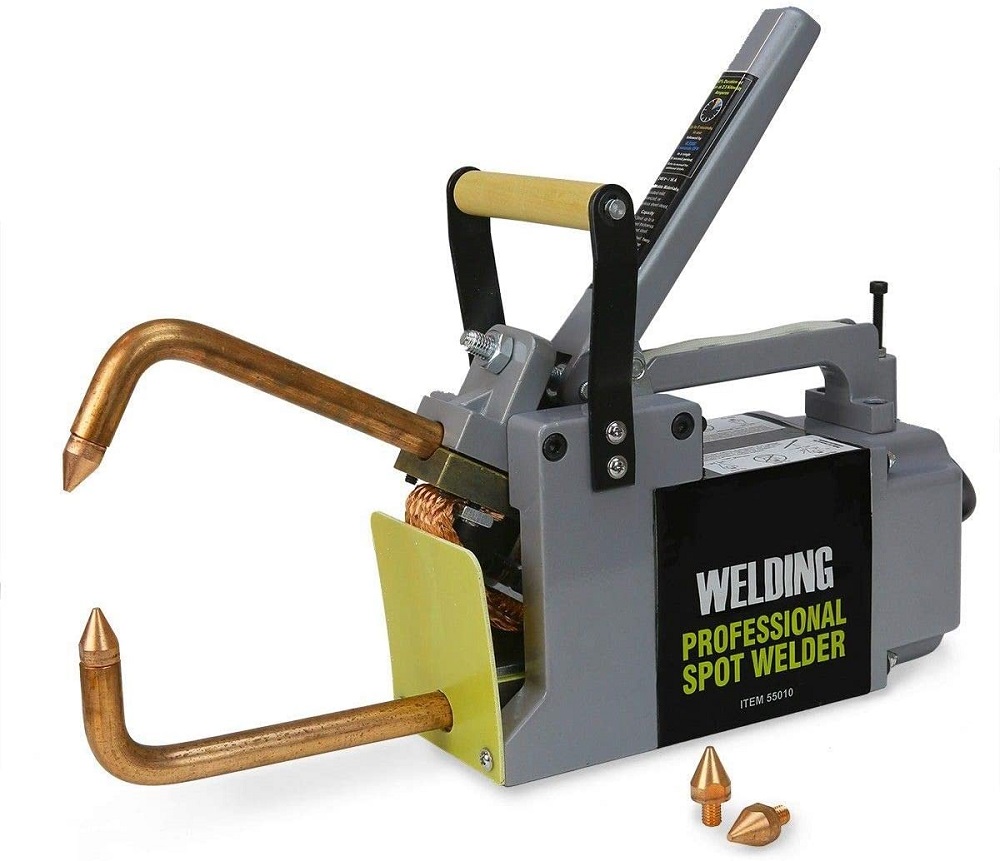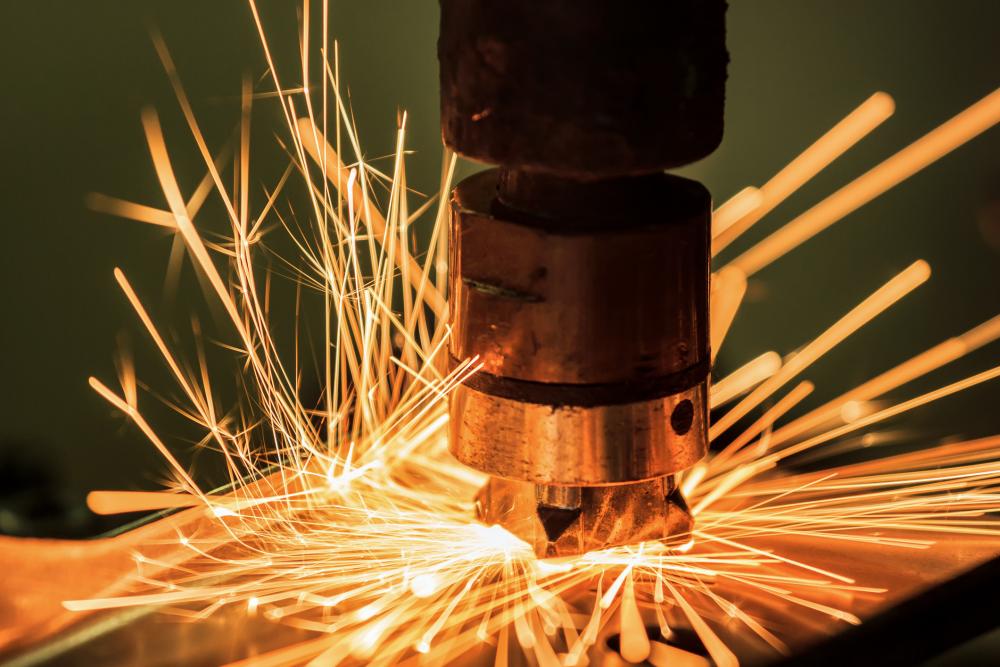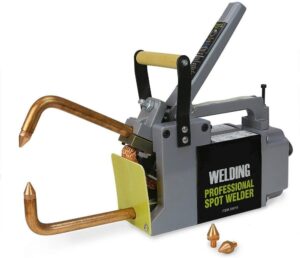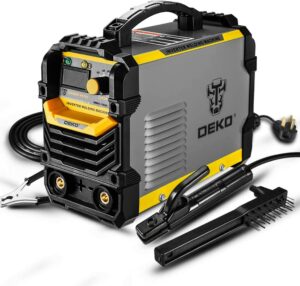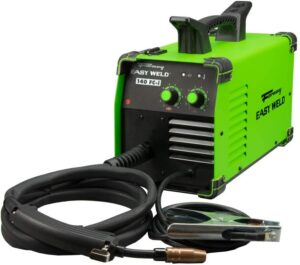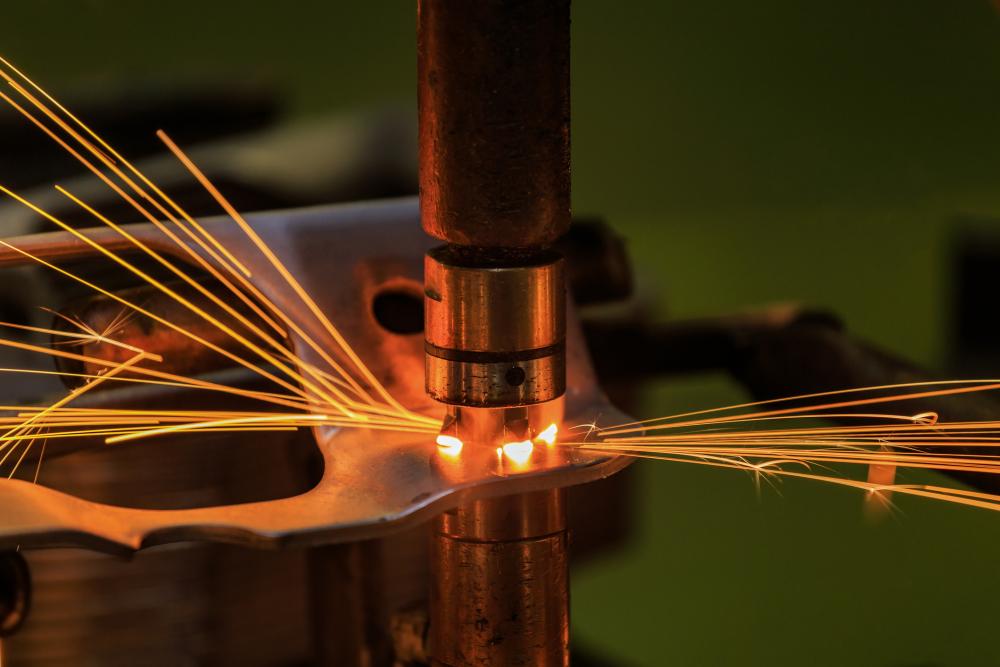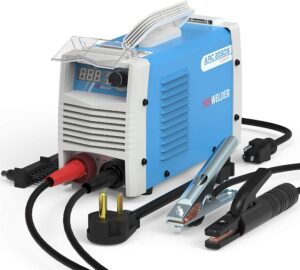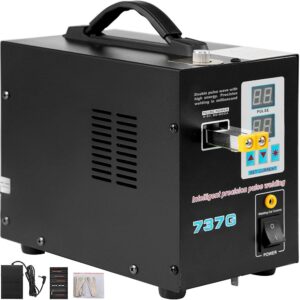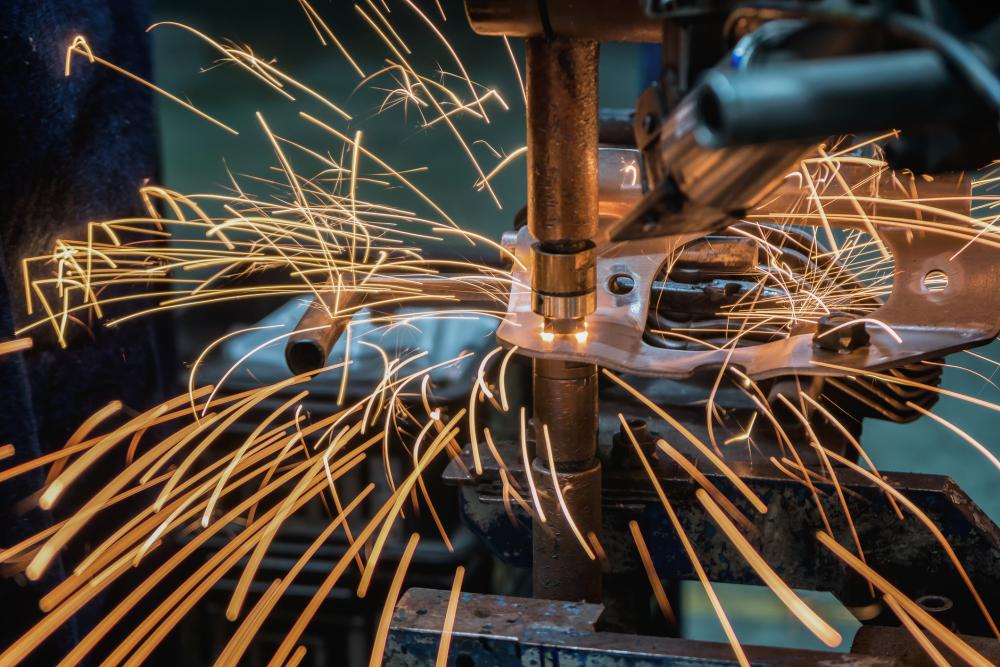Best Spot Welders for Both Beginners and Professionals in 2023
Welding is a process that is never simple, regardless of what type it is, and besides your inherent skill and experience, one thing that can greatly determine how sturdy the weld will be is the tool that you’re using for your job.
Of course, there are many types of welding, and each requires a different type of tool. For example, if you’re into spot welding, you will require a top-tier spot welder, and that’s precisely what we will be showcasing in the following article.
We will be explaining some of the ins and outs of spot welding while also suggesting 5 very good spot welders that you could try since the market is so full of them that choosing one that is actually good can get rather confusing.
The entries on our list were chosen based on their specs, special features, price, and user popularity, and we hope that after you reviewed them all, you can make a more informed decision regarding which is the one best suited for your needs.
Table of Contents
What Is Spot Welding?
In short, spot welding is the process of welding two overlapping metal pieces via the application of localized pressure along with a strong electrical current to the two pieces of metal.
During the welding process, your spot welder creates thermoelectric heat, and this is then applied to specific areas on the metal called circular points.
Almost all sport welders use copper allow electrodes because of the copper’s natural electrical conductivity.
This process can be used on most types of metal, and the only real limitation is the thickness of the area where you need to do the welding, as it can be anywhere between 0.02 inches to 0.118 inches.
What Is a Spot Welder?
Most spot welders feature the same base design, and the only real difference between the models consists of the materials used in the construction, minor design changes, and different power supplies.
As such, most spot welders consist of a workstation that is made out of the following:
- A power supply
- The weld head
- The welding electrodes.
Spot welders are most frequently used in the automotive industry, as well as any other industry where you need to turn two separate pieces of metal into a single one. In fact, spot welders are even used by contemporary artists that like to create abstract metallic sculptures, so they also have somewhat of a creative value as well.
Although not as common as other types of welding devices, at least not for non-professionals, spot welders are easy to learn and even master. In fact, you can go ahead and try out a spot welder on different pieces of metal just to see how it works, eventually evolving to the point where you can actually start using it for its intended purpose.
Where Can I Buy a Good Spot Welder?
Knowing where to buy the right product, especially when it’s a piece of electrical equipment that is inherently pretty expensive can be very difficult, especially if something happened during transport and it got damaged, or if it just doesn’t meet your expectations, and that is when returning it becomes the only option.
Besides, if you go to a dedicated manufacturer’s website, you’ll notice how they all advertise their products as being the best, at which point choosing one becomes even more confusing.
Because of that, whenever we want to browse for products, we like to go to a website where not only can we see what other users think about them (both the pros and the cons), but in case something goes wrong, we can always simply return the product and get a refund immediately, and that website is called Amazon.
Besides, Amazon has a wide selection of products from manufacturers around the world, and their delivery times are pretty good as well, although it does depend on the area where you are living.
Which Are the Best Spot Welders?
1. Stark Professional Spot Welder
Topping off our list is the Stark Professional Spot Welder, a top-tier portable spot welder with a single-phase design that makes it easier to weld a wide variety of materials together, including uncoated mild, galvanized, or stainless sheet steel, with a thickness of up to up to a maximum of 0.118 inches.
The welding tips abandon the traditional copper alloy in favor of more durable stainless steel ones but don’t worry about how this will affect welding quality since you will never be able to tell the difference.
It comes with a very simple welding mechanism that makes inserting materials very easy, and with a single push of the button, you can go ahead and start the welding process, thus saving up a lot of time you would otherwise waste with material preparation.
All you have to do is insert the two pieces of metal between the two 0.6-inch thick tongs and then press down on the clamp to lock them together before actually starting the machine
Carrying this spot welder around is made all the easier thanks to a handle that is attached to the top of the machine, so you can move from one corner of the house to another easily, or carry it around if you’re on the road.
As for the package itself, if you do decide to buy this spot welder, you’ll also receive an extra pair of welding tips for multiple users, so you save a bit of money on consumables as well.
Whenever you’re done with your welding, or when you need to replace them, simply twist the tips off and screw on the new ones.
Because of the overall simplicity of this product, we highly recommend it if you’ve never had or used a spot welder before since it is extremely beginner-friendly. Besides, even if you won’t actually be using this spot welder for any actual welding, it makes for a great practice tool if you have an apprentice that’s just learning the trade.
Besides, this product’s price tag is very accessible, so buying it as a practice tool will not leave a big dent in your budget.
Speaking of budget, if you made up your mind and decided to give this product a try, simply go to the Stark Professional Spot Welder’s Amazon page, read up what other users have to say about it, and then decide on whether you’ll press Add to Cart or not.
Specs:
- Welding thickness: 0.118 mm
- Power output: 120/240 V
- Work Cycle: 50%
- Power source: AC
- Size: 18.5 x 4.5 x 7.5 inches
- Weight: 28.4 pounds
Pros:
- Works on a wide variety of materials
- Easy to use and beginner-friendly
- Handle makes it easier to carry
- Press and release mechanism
Cons:
- A bit heavy
2. DEKO MMA ARC Welding Machine
The next entry on our list is the DEKO MMA ARC Welding Machine, a manual metal arc welding machine that showcases incredible levels of welding power, being easily capable of handling mild steel, weld steel, stainless steel, and even cast iron thanks to the use of advanced insulated-gate bipolar transistor (IGBT) inverter technology.
However, we also choose this welding machine because regardless of how much power it showcases, it comes with a very compact design, as well as an easy-carry handle, making it both easy to transport and store in places where there’s not much room to spare.
It’s built with high-endurance materials that make it very durable, so you know that investing in this spot welder is going to be beneficial in the long run.
As far as features go, it has closed-loop feedback control, and because the output voltage is stable, it features great adaptability with any electrical network, and they also designed this product to be energy efficient.
This spot welder is also very quiet thanks to the high-performance fully mute fan motor that comes with an instant cooling function that promotes body heat dissipation
Thanks to its features, this spot welder is an ideal choice for use in plumbing, construction work, thin metal precision welding, automobile manufacturing, metal processing, and more.
Lastly, this spot welder comes with several fittings that can make your job easier before, during, and after the welding is done. These include an electrode holder with a strong clamping force, an input power adapter, and a brush to remove any welding debris.
Before you decide on whether this is the right machine for you or not, go to the DEKO MMA ARC Welding Machine’s Amazon page and check out the customer feedback to get a hands-on approach to what this machine is all about.
Specs:
- Welding thickness: N/A
- Power output: 110/220 V
- Work Cycle: 40-60%
- Power source: AC
- Size: 11.4 x 4.92 x 7.87 inches
- Weight: 12.1 pounds
Pros:
- Sturdy build
- Portable design
- Uses advanced IGBT technology
- Very silent and good at dissipating heat
Cons:
- Not suited for beginner
3. Forney 140 FC-i Welder
If versatility is what you are after in a spot welder, look no further than the Forney 140 FC-i Welder, since it comes with everything that both a DIY enthusiast and a professional welder can ever need.
For example, it has infinite voltage and wire feed speed control, so it can adapt to any type of weld and material that you need, and the 140 A power output allows this little device to handle mild steel of up to 1/4 inches thickness.
Of course, all that raw power may make you think that this machine is rather bulky, but you couldn’t be any further from the truth, since it only weighs around 19 pounds, and the handle that it has makes carrying it around to be very easy.
More so, you don’t have to worry that carrying it around will lead to more wear and tear than would be necessary since this spot welder is encompassed entirely in an all-metal case.
Another reason why this spot welder deserves a spot on our list is that if you do decide to get it, you will not only get the machine itself but also a ton of other accessories and materials as well, basically like a welder’s starter kit.
As such, the welder also comes with an 8-inch MIG gun, an 8-inch ground clamp, an integrated handle with a torch wrap, and a 20A-15A adapter, and if you have problems with the base product or any of the aforementioned accessories, know that everything is backed by an extensive 1-year warranty.
Overall, this Forney welder impressed us by being a very efficient flux-core capable welder that is ideal for first-time welders, as well as professionals.
If you’re into DIY projects, metalwork, automotive repair, or other endeavors where binding pieces of metal is a core aspect, then you should definitely go ahead and consider the Forney 140 FC-i Welder.
Specs:
- Welding thickness: 0.25 inches
- Power output: 140V
- Work Cycle: 25-100%
- Power source: AC
- Size: 16.7 x 12 x 8.1 inches
- Weight: 19 pounds
Pros:
- The package comes with plenty of accessories
- Flux-core capable
- Easy to transport
- Has a cable wrap
- Compact
Cons:
- The wire that comes with the welder isn’t all that great
4. YESWELDER ARC-205DS
We’re getting close to the end of our list, but that doesn’t mean that the products listed are getting worse and worse, and you can convince yourself about that just by looking at the YESWELDER ARC-205DS, a high-powered and very powerful spot welder.
It features dual power inputs, one of 110V for a 150A output, and another of 220V for a 205A output, each with its own compatible types of rods.
The design of the welder is made to be as compact as possible, with a weight of only around 14 pounds, and it comes with a very convenient handle for easy transportation, as well as slots where you can insert the ends of a belt if you prefer carrying it on your shoulder.
Using it will be a walk in the park because it makes arc starting very easily, and it also incorporates technology that ensures good arc stability, making it ideal for delicate welding jobs where very thin sheets of materials need to be handled.
Safety is yet another area where this welder gets bonus points from us since it comes with features like automatic compensation for voltage fluctuation, overload protection, a good temperature control via fan dormancy, and over-current protection.
If you decide to get this spot welder, know that you will also be receiving several other accessories within the same package, such as an electrode holder with cable, and a ground clamp with both of which are 10-feet each.
To find out more details about this product, see pictures of it, and read user reviews, simply visit the YESWELDER ARC-205DS’s Amazon page.
Specs:
- Welding thickness: 0.5 inches
- Power output: 110V/220V
- Work Cycle: 60%
- Power source: AC
- Size: 15.51 x 13.19 x 7.64 inches
- Weight: 13.82 pounds
Pros:
- Starts arcs easily
- Dual power output
- Plenty of safety features
- Easy to carry and postable
- Powerful against very thick sheets of steel
Cons:
- You need to buy an adapter if you need to buy materials for TIG welding
5. Mophorn 737G Battery Spot Welder
Closing our list of best spot welders is the Mophorn 737G Battery Spot Welder, a machine that’s ideal for those of you that are on a tight budget but don’t want to cheap out on quality either.
It’s great for a wide variety of jobs or at least anything that involves welding nickel-plated steel strips of up to 0.03-0.2 mm in thickness, and you don’t have to worry about powering this machine up, since it works with a lot of battery types, including 18650, 14500 and any other rechargeable lithium batteries.
It comes with a dual-pulse mode, and each of these modes has its own separate displays, both current and pulse display, and they are made so that the welder can get clear and instant information about the machine’s current power settings, which alsoincludespulse quantity and current when you are at work with this machine.
The separate panels also panel allow you to set current and pulse efficiently, so you’re workflow will be greatly optimized, and using this tool is also extremely easy since all you need to do is push the fixed head up, or use the foot pedal.
another thing we liked about this product is something that a lot of welding machines have to deal with, and that is heat management. Well, this Mophorn spot welder has that covered thanks to the radiator.
Not only does it come with a built-in smart chip to prevent overheating damage to the welder, but it also features automatic short-point protection, so the welding is also protected from overheating.
This product’s biggest highlight, however, is the fact that it is so portable, thanks to the compact body shape, as well as the ergonomic handle that makes it light and easy to move, so welding jobs on the go will be much easier.
If you’re impressed by what this small yet powerful spot welder can do, go ahead and check out what other people think about it by visiting the Mophorn 737G Battery Spot Welder’s Amazon page and going to the Reviews section.
Specs:
- Welding thickness: 0.03 – 0.2 mm
- Power output: 110V
- Power source: AC/Battery
- Size: 9.1 x 5.5 x 8.3 inches
- Weight: 11.84 pounds
Pros:
- Great for nickel, iron, nickel-plated iron, and more
- Dual welding mode with separate LCDs
- Very portable
- Easy-to-use
- Affordable
Cons:
- Doesn’t work well with aluminum or copper
How to Choose a Good Spot Welder?
If you’re never had a spot welder of your own before, chances are that even after we showcased the 5 products above you might still be a bit confused regarding which is best for you.
That’s why we went ahead and created this little guide where we will be explaining the most important features to look after when shopping for a new spot welder, so that you know precisely what each product focuses on, and therefore which is the best for you.
Welding Thickness
We already talked at the beginning of the article about how spot welding can be used on metals that are within a certain interval of thickness, but you need to understand that not all spot welders can be used on those precise values, as some can only work with thinner sheets while only the most powerful ones can piece together the thicker ones.
Thankfully enough, the welding thickness range is one of the first things that any spot welder will display in its spec sheet, since for many users, professionals included, it’s also the only thing that they are interested in.
However, if you’re not a professional welder and you’re just interested in doing some minor DIY projects, a spot welder with a welding range between 0.05 and 0.2 mm will suffice.
Power output
An important aspect to consider when buying a spot welder is to check out what power output since this effectively dictates the spot welder’s entire performance, including the above-mentioned welding thickness.
Because of that, the next spec you should always check out when browsing for a spot welder is a feature called welding power. The average spot welders have a welding power anywhere between 50A to 800A, and those of you that want to work with really thick sheets of metal should opt for a model with even higher power output.
Temperature Range
Power dictates the spot welder’s temperature range, and the temperature range dictates the welding thickness and what kind of metals the welder can be used on, and that is why this is yet another important criteria that one needs to consider when buying a spot welder.
Typical spot welders have temperature ranges between 100 to 400 degrees Celcius or 150 to 500 degrees Celcius, although higher temperature ranges mean that the welder can handle more metals, and is, therefore, less limited.
Work Cycle
Since welding is all about outputting a large about of power and creating a lot of heat, it goes without saying that no welding tool can work indefinitely without overheating and damaging itself, and that is where the work cycle ) also known as duty cycle) comes into play.
Without going into details, a welding machine’s work cycle is basically the percentage of time that a machine will safely operate, or in this case weld, within a certain time frame, and the value is usually represented as a percentage, and higher work cycles (percentages) are always better.
For example, if a spot welder states that it has a work or duty cycle of 200 Amps at 30%, it means that it will operate at 200A for 3 minutes within a 10 minute time period.
Power Source
Now that we talked about the more important features that directly impact a spot welder’s performance, it’s time to look for the additional specs that can be treated as more like secondary criteria.
For example, spot welders can be both battery-powered or can work while connected to an AC power source.
Sure enough, if you’re going with battery-powered spot welders, you need to know that they are usually more limited in terms of welding thickness, power output, temperature range, and work cycle, although this difference is dictated purely by the spot welder’s own design, as well as the batteries.
Speaking of the batteries, there are a lot of battery types that are available for spot welders out there, but two of the most popular ones available on the market are 14500 and 18650 batteries, and most mainstream battery-powered spot welders are compatible with these particular models.
Control Options
We already talked about how simple spot welding actually is once you get the hang of it, but for those of you that do it for a living, having a wider range of control options available can greatly improve the speed and quality of your work.
Typical spot welders come with dials and switches, but more modern models have big display modules, built-in control panels, and more.
Accessories
Spot welders are the type of machine that need a lot of accessories to perform a wide range of jobs. Many manufacturers will usually include several such accessories in the package when you buy a spot welder by default.
For example, the typical spot welder kit will usually contain the following:
- The spot welder
- Welding needles
- A battery holder (for battery-powered models)
- Nickel platings
- Screwdrivers
- A foot pedal
- Fuse tubes
- Wrenches
Sure enough, other accessories can be included in a package deal, but if you manage to find a product that comes with such a bundle, you should take advantage of it. Not only is it a good value for your money, but if a package contains all the right tools and accessories, you can start welding without any further preparations.
Price
Speaking of value for your money, the price of a spot welder also plays an important role. In fact, for many users out there, the price tag is the determining factor whenever they judge whether to buy a product or look for another one, especially since a spot welder is not inherently cheap.
Sure enough, prices differ based on the brand and the spot welder’s specs. However, this also means that if you’re not going to do any heavy-duty spot welding, or if you’re only ever going to do it once in a while, investing too much would be useless.
The same cannot be said if you’re a professional, since you’ll presumably be using this machine a few good hours a day, every single day, si buying a more expensive piece of equipment that will do a great job and last you for a very long time is actually recommended.
Warranty
Once you’ve paid quite a hefty sum of money for a spot welder, you’ll probably feel better if you know that you’re investment is covered by warranty, and this is something that many manufacturers will offer. More so, if you have the option to get an extended warranty, we recommend that you go right ahead and get one.
Pros and Cons of Spot Welding
There are many types of welding that you can try, and they all have their own advantages and disadvantages. Spot welding isn’t perfect, and you can’t always use it either, so before you even think about making any kind of purchase, take a look at these pros and cons of spot welding, and see whether this is actually what you want or need.
Pros of Spot Welding
- No extra metal needs to be used to create the welds since this method uses an electrical current that is conducted through the electrodes.
- Spot welding creates some of the most durable welds available, making it the ideal choice whenever you want long-lasting results above all else.
- Spot welders are easy to move around, making them great when you have DIY projects throughout the entire house, or if you’re on the road.
- This welding process takes very little time, so when you need to perform a time-sensitive job, spot welding is an ideal choice.
- You have very few requirements in terms of consumables since all you need is an electrical power source.
- You don’t need to work with high heat levels, so there’s no fear of burning any of your extra materials.
- Spot welding as a process is very easy to learn and thus recommended for beginners as well.
Keep in mind that no matter how simple we make spot welding sound like, it’s still something that requires your utmost attention, and even some practice before you engage in any serious projects.
Cons of Spot Welding
Now that we’ve listed the many advantages of spot weldings, we now want to let you know about the few (albeit relevant) disadvantages of using this method.
- Spot welding is not effective on all materials. For example, it’s recommended that you use this welding method when using materials like:
- Titanium
- Nickel alloys
- Stainless steel
- Low-carbon steel
- Spot welding works best when you’re able to work on a completely flat surface at a precise angle. The angle at which the electrodes are pointed as opposed to the metal can greatly influence whether or not you can use this method, and if you’re working with pieces of metal that feature angles and odd shapes, you’re better off using a different welding method.
Spot Welding Safety Concerns
It doesn’t matter if you’re doing spot welding, TIG welding, Flux-core welding, or any other type of welding, since they all involve high electrical currents, extremely high temperatures, molten splatter, sparks, and all kinds of other hazards you do not want to be in direct contact with.
Because of that, you must always do a little research either online or by using the safety instructions and the user’s guide of whatever welding machine you bought.
Spot welders can come in a variety of shapes and sizes, so it’s best if you always follow the manufacturer’s exact guidelines. However, there are a few general safety procedures that you should always follow if you want to engage in any type of welding.
For starters, after you’re done with your spot welder, the electrodes will be extremely hot, so remember to let them cool off before removing them and depositing them anywhere, especially if there are other flammable materials in the area.
Speaking of removing the electrodes, remember to wear safety gloves at all times so that you don’t burn your hands and fingers. Special welding gloves are recommended, and there are plenty of options for you to buy.
All welders create sparks and molten spatter, so always remember to wear personal protection equipment (PPE) that covers your face, especially your eyes.
This can come in the form of a full welding mask or a pair of welding goggles. These will not only protect your face from flying debris, but the lens will protect your eyes from the intense light and invisible UV radiation.
One very common safety concern when using spot welders is that the electrodes can easily get stuck during the welding process, and that is not something that you’d want to happen.
This can happen due to a wide variety of reasons, including:
- Improper alignment
- Insufficient force
- Dirt and debris
- Too much heat
All of these can be prevented through proper maintenance, frequent cleaning of your work environment, routine checkups before every welding job, gauging the temperature correctly, and more.
Besides, whenever you store the electrodes, make sure that there is no risk of them corroding, so avoid humid environments. As an added layer of protection, you can apply some corrosion protective solutions, which can be bonders, sealers, primers, or paint coats.
Best Spot Welders: Closing Thoughts
This brings us to the end of the article, and we hope that it was as informative and as simple for you as possible, both in terms of what sport welding is as a process, as well as what spot welders you should use.
The 5 entries on our list were chosen so that they covered a lot of particular needs, from powerful spot welders used by professionals to lighter ones that any DIY enthusiasts can use once in a while because, in the end, the choice is solely up to you and your need.
However, whether you will choose the more premium Stark Professional Spot Welderor the more affordable Mophorn 737G Battery Spot Welder, remember that a spot welder is a good investment, so if you do find a model that perfectly meets the criteria, disregard the fact that you need to pay a few extra dollars.
Last but not least, don’t forget to stay safe while you’re welding, so if you’re on the market for a new spot welder, might as well start browsing for some welding gloves, boots, jackets, and other important safety gear, since they can not only keep you out of harm’s way, they may even save your life.
